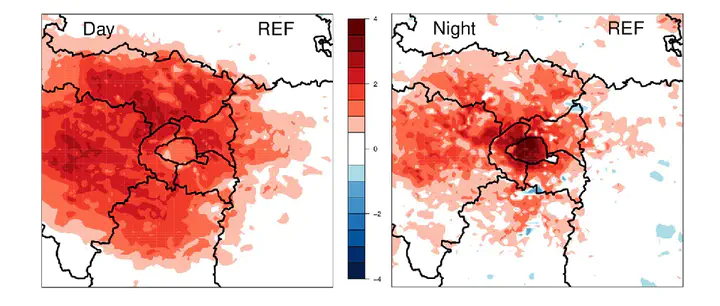Role of Watering Practices in Large-Scale Urban Planning Strategies to Face the Heat-Wave Risk in Future Climate

Abstract
Increasing heat-wave risk due to regional climate evolutions, exacerbat- ed by urban heat island (UHI) effects, is a major threat for the inhabi- tants of many cities. Adaptive policies such as greening the urban environment are often proposed to limit population vulnerability, as vegetation enables to regulate the microclimate by evapotranspiration. The efficiency of such strategies depends on water availability and raises the issues of water supply for irrigation and of vegetation efficiency. Three vegetation watering alternatives and a scenario of pavement watering are studied and compared using Paris (France) urban area as a case study. With an evolution of the city based on “business as usual” trends, urban climate modeling enables to evaluate both UHI and heat stress under heat-wave conditions in 2100. Vegetation watering is efficient in reducing air temperature and thermal stress, but mostly in residential areas where vegetation density is important enough. Pavement watering is relevant in the densely built city center only where it improves the cooling efficiency and increases the water consumption by 2% only. The combination of both solutions provides the best performances with a reduction (compared to a non irrigated scenario) of the maximum temperature anomaly by 0.8 °C (2.6 °C) dur- ing the day (night).